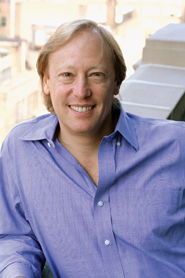A new survey by Liquidnet found that two-thirds of institutional investors are worried about the impact of high-frequency trading.

Liquidnet polled clients and found that of about 300 respondents, 43 percent were "concerned" and 23 percent were "very concerned" about HFT and its effect on their trading performance.
"As HFT is growing around the world, the institutional traders are becoming more concerned," said Seth Merrin, founder and chief executive officer of Liquidnet. "Now that the institutions have had a number of years’ worth of experience with high-frequency trading, they see the impact more immediately."
Participants were polled during a three week period ending July 7, 2011.
According to Tabb Group, high-frequency trading constitutes about 65 percent of overall U.S. stock-trading volume.
Mark Kuzminskas, director of equity trading at Boston-based Robeco Investment Management, told Traders Magazine he is less concerned about HFTs and their trading practices now than he was two years ago.
"That is not to say that I still don’t have concerns," he said, "but as I’ve looked into HFTs more, I’ve become less concerned over time."
Merrin said this was the first year Liquidnet has conducted the survey, so he could not compare the results with past findings. He noted, however, that the survey had been held prior to the volatility in early August that heightened concerns about HFT.
While many algorithms offer ways to avoid gaming by HFTs, Merrin said these algos just lead to an arms race with computerized traders.
"There’s so much money to be made in high-frequency trading that whatever algorithm the brokers use today will be outsmarted by the high-frequency trading computers tomorrow," he said.
However, Kuzminskas does think algorithms can be used successfully to mitigate the effects of HFT. Employing different algorithms and gaining a better understanding of how they work has been a cornerstone of Robeco’s desk’s algorithmic trading strategy, he said.
"While our use of algos has been steady to up over the years, we’ve tried to use them smarter by understanding how they operate," he said. "We’re also trying to be more nimble in how we use them-by using limits, employing a shorter time horizon an order is in the algo or even changing our vendors more frequently."
The bottom line, Kuzminskas said, is making sure the algos leave no recognizable pattern the HFTs can follow and exploit.
Merrin stressed that not all high-frequency trading is bad for the market and said he did not think HFTs were doing anything illegal or immoral.
Manoj Narang, chief executive at Red Bank, N.J.-based HFT Tradeworx, dismissed the buyside’s concerns. He said his trading strategies can’t impact stock prices over the course of a day, because they buy and sell the exact same number of shares, causing zero net impact on the market. Therefore, any suggestion that speedy trading is bad or illegal or immoral is ludicrous.
"Virtually every academic study on this topic has reached the same conclusion," Narang said: that HFT has not affected prices. "Institutional investors who claim otherwise ought to have their heads examined-or at the very least, their credentials."
But for institutional investors who do want to avoid HFTs, Merrin said they have to move their orders to institution-only venues like Liquidnet, where they won’t trigger high-frequency trading.
(c) 2011 Traders Magazine and SourceMedia, Inc. All Rights Reserved.
http://www.tradersmagazine.com http://www.sourcemedia.com/





